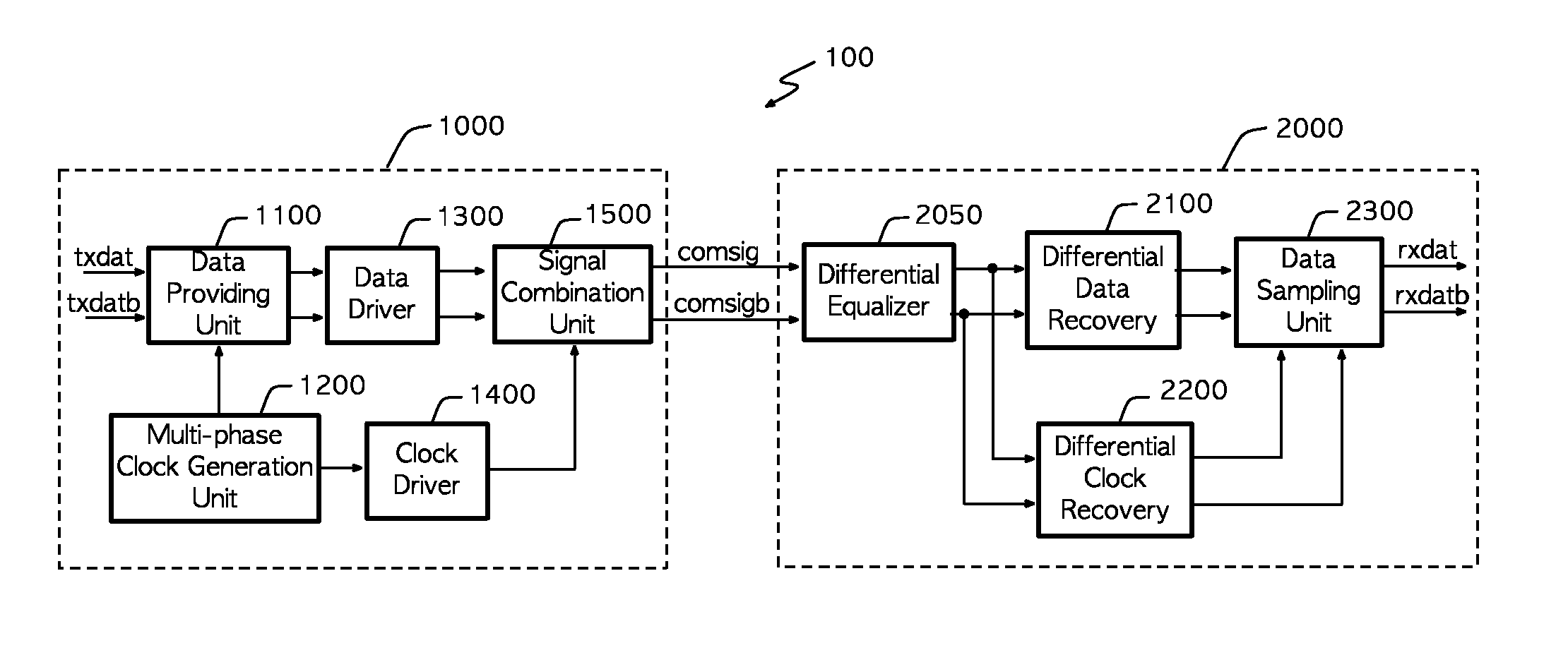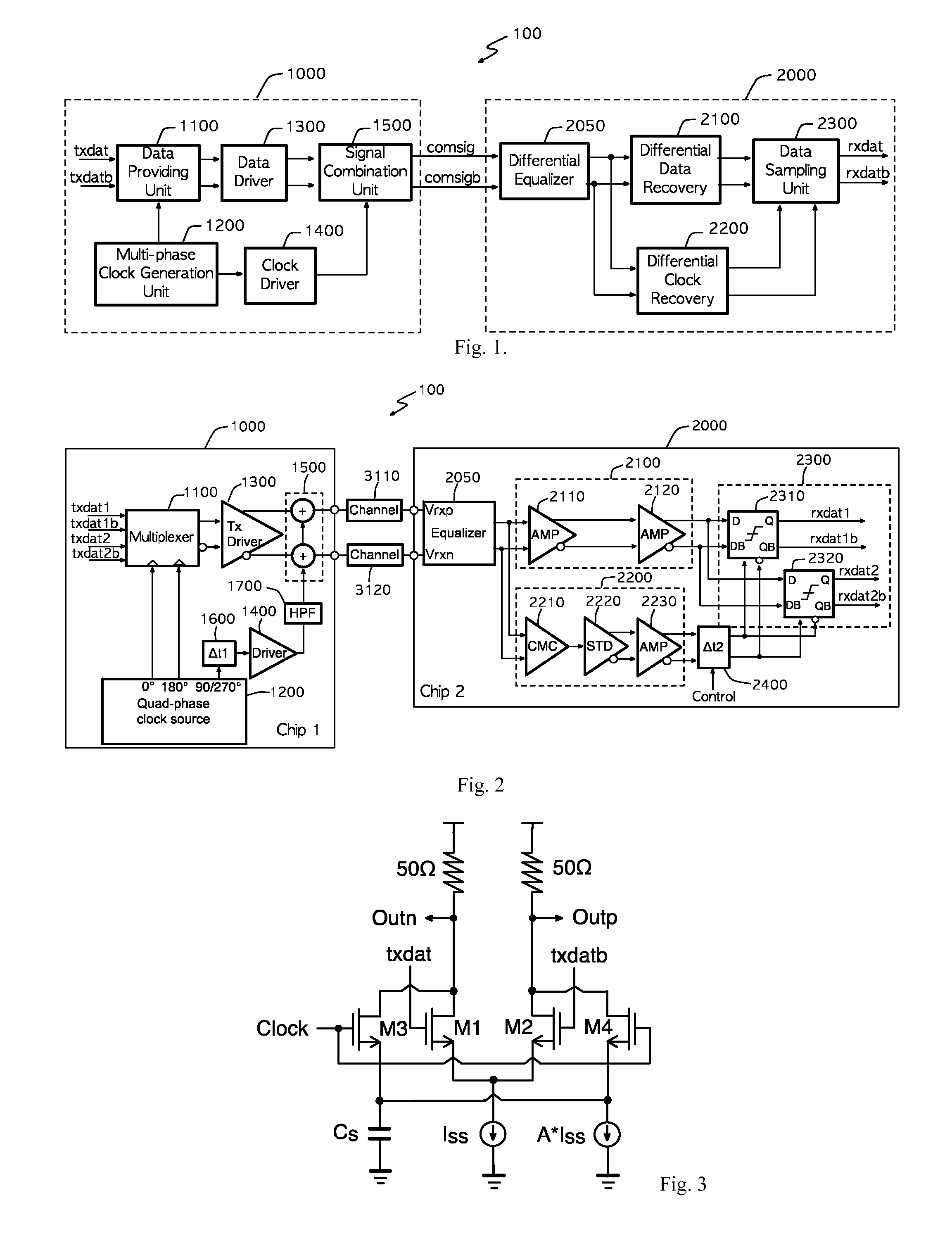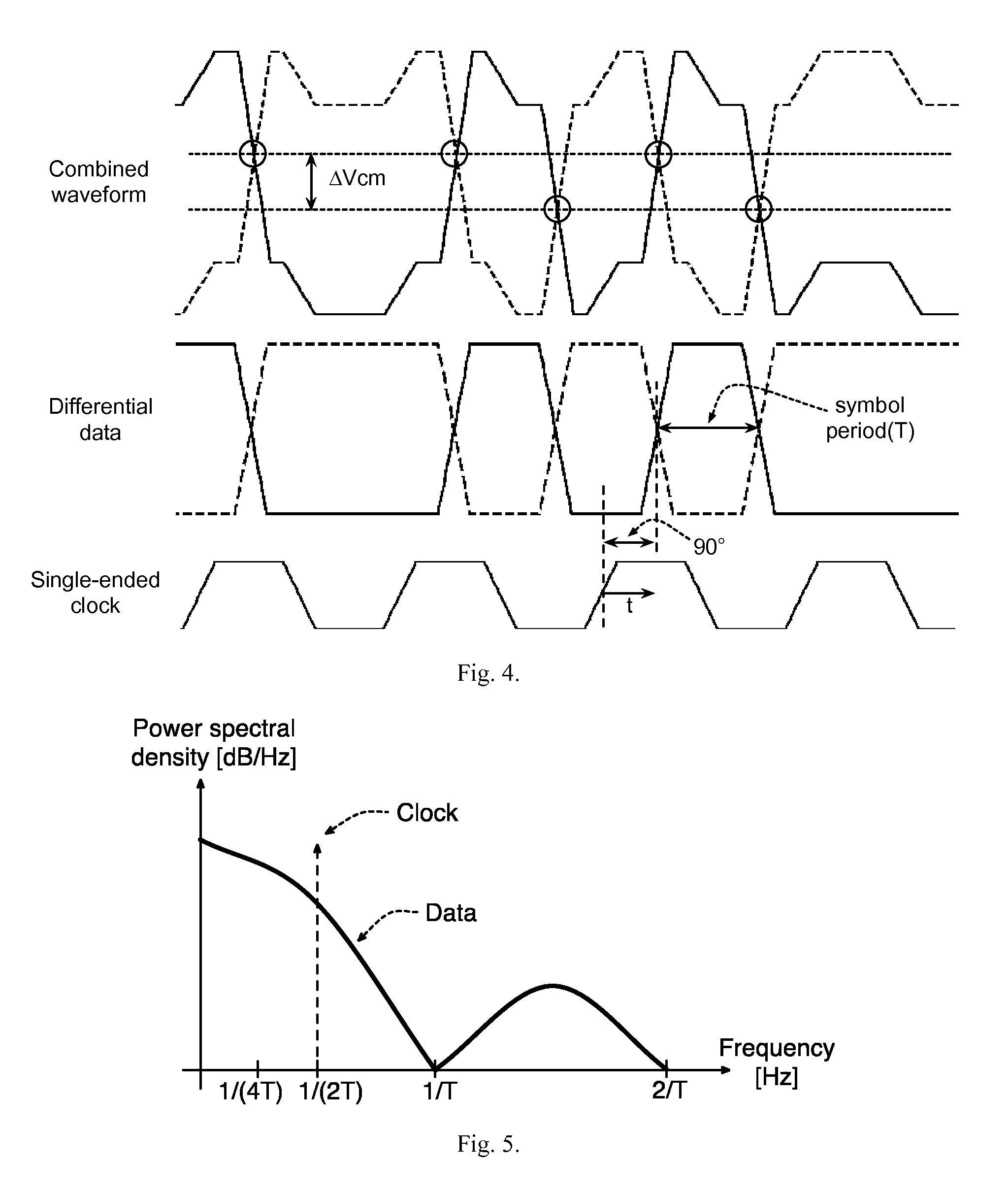Clock-embedded source synchronous semiconductor transmitting and receiving apparatus and semiconductor system including same
a clock-embedded source and synchronous technology, applied in the field of semiconductor systems and semiconductor transmission/reception apparatuses, can solve problems such as jitter noise, change of data signal transition time, and increase of bit error rate (ber) attributable to power line noise inside and outside the chips
- Summary
- Abstract
- Description
- Claims
- Application Information
AI Technical Summary
Benefits of technology
Problems solved by technology
Method used
Image
Examples
Embodiment Construction
[0075]FIG. 9 is a block diagram illustrating an example of a semiconductor device in accordance with another embodiment of the present invention. FIG. 9 illustrates one implementation example of the first semiconductor device 1000 for sending differential data.
[0076]As illustrated in FIG. 9, the first semiconductor device 1000 may include a multiplexer 1100, that is, a data providing unit, a clock source 1200, that is, a clock generation unit, a data driver 1300, a clock driver 1400, and a phase shifter 1700. The multiplexer 1100, the data driver 1300 and the clock driver 1400 have the same construction as those of FIG. 1 and operate like those of FIG. 1, and a detailed description thereof is omitted.
[0077]The clock source 1200 may generate only a single clock signal, or may generate two single-clock signals having opposite phases. For example, two single clock signals having phases of 0 degree and 180 degrees are generated and provided to the multiplexer 1100. Differential data, th...
PUM
 Login to View More
Login to View More Abstract
Description
Claims
Application Information
 Login to View More
Login to View More - R&D
- Intellectual Property
- Life Sciences
- Materials
- Tech Scout
- Unparalleled Data Quality
- Higher Quality Content
- 60% Fewer Hallucinations
Browse by: Latest US Patents, China's latest patents, Technical Efficacy Thesaurus, Application Domain, Technology Topic, Popular Technical Reports.
© 2025 PatSnap. All rights reserved.Legal|Privacy policy|Modern Slavery Act Transparency Statement|Sitemap|About US| Contact US: help@patsnap.com



